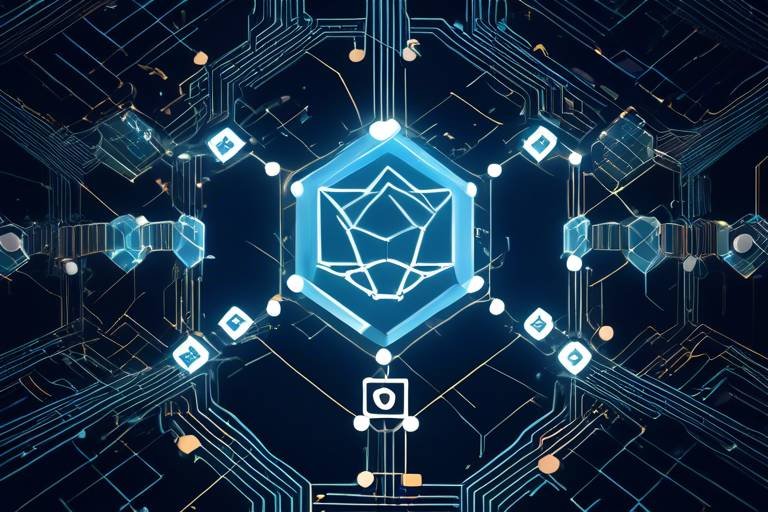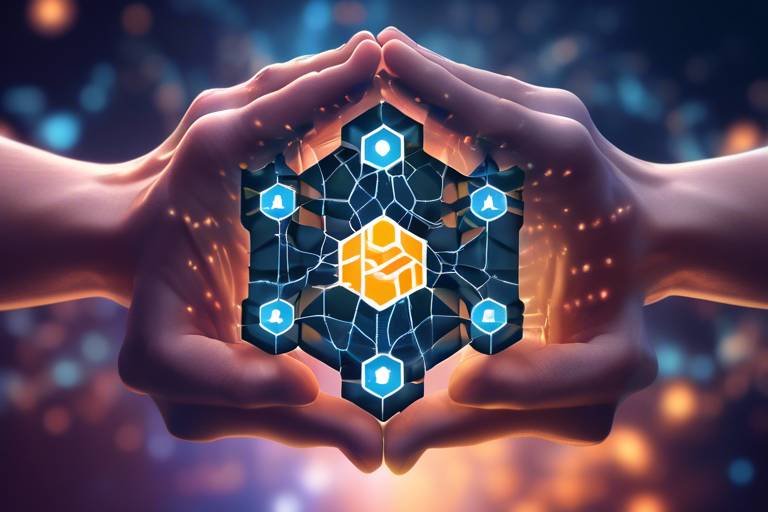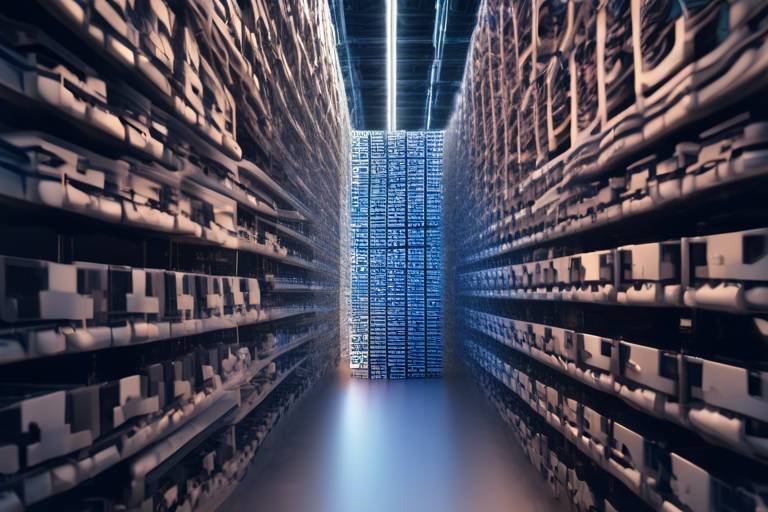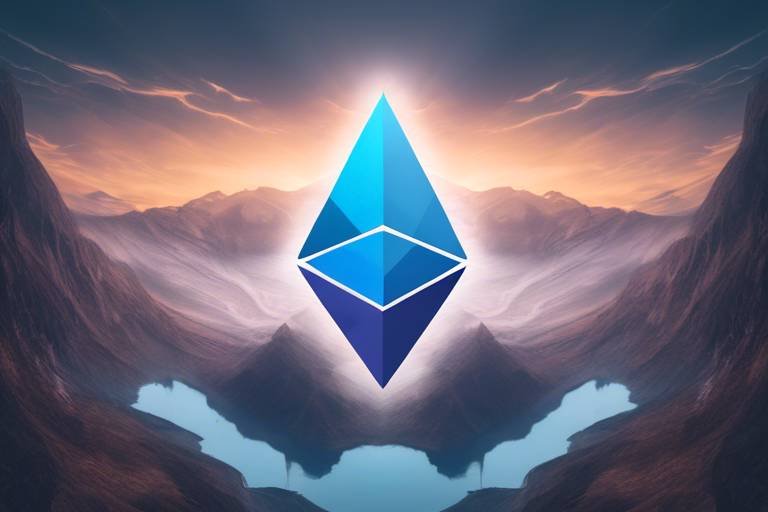Blockstack - Decentralized Internet Solutions
In today's digital landscape, the need for privacy and control over personal data has never been more pressing. Enter Blockstack, a groundbreaking decentralized computing network designed to give users the power to manage their own data while ensuring a secure and user-centric internet experience. Imagine a world where you are the master of your digital identity, where your personal information is not just another commodity to be harvested by corporations. Blockstack aims to make this vision a reality by leveraging innovative technologies that prioritize user sovereignty and decentralization.
At its core, Blockstack is built on the principles of decentralization and user empowerment. Unlike traditional internet models that often rely on centralized servers and authorities, Blockstack allows users to interact through decentralized applications (dApps) that run on a secure, peer-to-peer network. This means that your data is stored locally on your devices rather than on a central server, significantly reducing the risks associated with data breaches and unauthorized access. Think of it as having your own personal vault for your digital life, where you decide who gets access to what, and when.
Blockstack's architecture is not just about privacy; it's also about creating a more interconnected and user-friendly internet. By fostering interoperability among different applications, Blockstack enables seamless user experiences across various platforms. This means that whether you're using a social media app, a financial service, or a productivity tool, your data remains yours, and you can easily switch between applications without losing control. It's like having a universal key that opens multiple doors, each leading to a different aspect of your digital life.
As we delve deeper into the features and components of Blockstack, you'll discover how this innovative platform is not only reshaping the way we think about data ownership but also paving the way for a more secure and equitable internet for everyone. With a vibrant developer community and strategic partnerships, Blockstack is well-positioned to lead the charge towards a decentralized future. So, are you ready to explore the possibilities of a truly user-centric internet? Let's dive in!

Understanding Blockstack
Blockstack is a groundbreaking decentralized computing network that aims to revolutionize the way we interact with the internet. At its core, Blockstack is built on the principle of user sovereignty, which means that individuals have complete control over their own data and online identity. Unlike traditional internet models, where centralized authorities often hold and manage user data, Blockstack empowers users to take charge of their digital lives. Imagine a world where you can browse, share, and connect without the fear of your personal information being exploited—this is the promise of Blockstack.
So, what exactly sets Blockstack apart from the conventional internet? Traditional models rely heavily on centralized servers and databases, which can lead to various issues, including data breaches, privacy invasions, and a lack of user control. In contrast, Blockstack utilizes a decentralized architecture that distributes data across a network of nodes. This means that no single entity has control over user information, significantly reducing the risk of data misuse. By leveraging blockchain technology, Blockstack creates a secure environment where users can interact freely and confidently.
At the heart of Blockstack's functionality are decentralized applications (dApps). These applications operate on the Blockstack network and allow users to engage with various services while maintaining ownership of their data. Unlike traditional apps, which often require extensive personal information, dApps built on Blockstack prioritize user privacy and minimize data collection. This shift not only enhances user experience but also fosters trust between users and developers.
To illustrate how Blockstack operates, consider the following key principles:
- Decentralization: No single point of failure exists, making the network more resilient to attacks and outages.
- Ownership: Users retain full control over their personal data, deciding what to share and with whom.
- Interoperability: Different applications can seamlessly interact with one another, providing a cohesive user experience.
By focusing on these principles, Blockstack not only enhances user privacy but also cultivates an ecosystem that encourages innovation and collaboration. As we move further into the digital age, the need for a more secure and user-centric internet becomes increasingly apparent. Blockstack is at the forefront of this movement, paving the way for a decentralized future where users are empowered to reclaim their digital identities.

Key Features of Blockstack
Blockstack is revolutionizing the way we think about the internet by introducing a suite of features that prioritize user privacy and control. Unlike traditional internet models that often leave users vulnerable to data breaches and privacy invasions, Blockstack empowers individuals with tools that ensure their data remains theirs. One of the standout features is its decentralized identity system, which allows users to create and manage their identities without the need for centralized authorities. This means that users can interact with applications while maintaining full control over their personal information, making it a game-changer in the realm of online security.
Another remarkable aspect of Blockstack is its secure storage solutions. Users can store their data securely on the blockchain, which is not only tamper-proof but also accessible only to them. Imagine having a digital vault where you can keep your most sensitive information safe from prying eyes. This feature significantly reduces the risks associated with traditional data storage methods, where data breaches are all too common.
Furthermore, Blockstack's unique blockchain architecture supports a myriad of decentralized applications (dApps) that enrich the user experience. These dApps are designed to be interoperable, meaning they can communicate and function seamlessly across different platforms. This interoperability fosters a sense of community and collaboration, allowing users to engage with various applications without the hassle of managing multiple logins or data silos.
To summarize, the key features of Blockstack include:
- Decentralized Identity System: Users manage their identities independently, enhancing privacy.
- Secure Storage Solutions: Data is safely stored on the blockchain, reducing breach risks.
- Interoperability: dApps work together seamlessly, creating a cohesive user experience.
These features make Blockstack not just a platform, but a movement towards a more secure and user-centric internet. As we continue to see the rise of digital threats and privacy concerns, the importance of such innovations cannot be overstated. With Blockstack, users can finally regain control over their online lives, paving the way for a future where privacy and security are paramount.

Decentralized Identity
In today's digital landscape, the concept of identity has evolved dramatically. Traditional models often place the power of identity in the hands of centralized authorities, such as social media platforms or government databases. However, Blockstack's decentralized identity framework flips this model on its head, empowering users to take control of their own identities without relying on third parties. Imagine having a digital ID that is uniquely yours, safeguarded and managed by you, rather than a faceless corporation. This is the essence of decentralized identity.
At the heart of Blockstack's decentralized identity system is a technology that allows users to create and manage their identities through blockchain. This approach not only enhances privacy but also ensures that users can authenticate themselves across various applications without needing to share sensitive personal information. For instance, when you log into a decentralized application (dApp), you can use your Blockstack ID, which is linked to your blockchain-based identity, instead of providing your email or phone number. This reduces the risk of identity theft and data breaches, which have become alarmingly common in our interconnected world.
Moreover, the decentralized identity system is built on the principle of user sovereignty. Users have the ultimate authority to choose what information to share, with whom, and for how long. This contrasts sharply with traditional systems where data is often collected, stored, and exploited without explicit consent. With Blockstack, users can manage their data through a simple interface, allowing them to control their digital footprint.
To illustrate how decentralized identity works, consider the following key components:
- Self-sovereignty: Users own their identity and can decide when and how to use it.
- Privacy: Personal information is encrypted and stored on the blockchain, making it accessible only to the user.
- Interoperability: A single identity can be used across multiple dApps, simplifying the user experience.
This revolutionary approach not only enhances security but also fosters a sense of trust among users. When people know they have control over their own identities, they are more likely to engage with decentralized applications and services. As the digital world continues to evolve, the importance of decentralized identity will only grow, paving the way for a more secure and user-centric internet.
Q: What is decentralized identity?
A: Decentralized identity refers to a system where individuals have control over their own identities without relying on centralized authorities. It allows users to manage their identities securely using blockchain technology.
Q: How does Blockstack ensure privacy?
A: Blockstack ensures privacy by encrypting personal data and storing it on the blockchain, allowing users to control access to their information and minimizing the risk of data breaches.
Q: Can I use my Blockstack ID across different applications?
A: Yes! One of the key benefits of Blockstack's decentralized identity system is interoperability, allowing users to log in to multiple dApps with a single Blockstack ID.

User Control and Privacy
In today's digital landscape, where data breaches and privacy invasions seem to be the norm, have become paramount. Blockstack stands out as a beacon of hope in this chaotic environment, offering users the ability to take back control over their personal information. Imagine a world where you are the sole owner of your data, where you decide who sees what and when. This isn't just a dream; it's the reality that Blockstack aims to create through its innovative framework.
At the heart of Blockstack's approach is the concept of decentralized identity. Unlike traditional systems that rely on centralized authorities to manage identities, Blockstack allows users to create and manage their own digital identities. This means that sensitive information, such as your name, email, and even your browsing habits, are stored securely on your device rather than on a server vulnerable to hacking. By doing so, Blockstack significantly reduces the risk of identity theft and unauthorized access to personal data.
Moreover, users can customize their privacy settings to fit their individual needs. This level of customization is revolutionary. For example, you can choose to share specific pieces of information with different applications, ensuring that you only reveal what is necessary. This selective sharing not only enhances privacy but also fosters a sense of trust between users and applications. After all, would you lend your car to someone you don’t trust? Similarly, with Blockstack, you can be selective about who gets access to your data.
The platform also employs advanced encryption techniques to safeguard user data. Every piece of information you store is encrypted, meaning that even if someone were to intercept your data, they wouldn't be able to decipher it without your unique key. This is akin to having a personal vault for your digital assets, where only you hold the key. Additionally, Blockstack's architecture ensures that your data remains yours, even when you use various applications. You can easily move your data between different dApps without losing ownership or control.
In a world where big tech companies often exploit user data for profit, Blockstack flips the script. They empower users to not only control their data but also decide how it is used. This shift not only enhances privacy but also encourages a more ethical approach to data management. With Blockstack, users can engage with applications knowing that their data is secure and that they have the final say over its usage.
To summarize, Blockstack's commitment to user control and privacy is a game-changer in the realm of decentralized internet solutions. By providing a platform where users can manage their identities and data securely, Blockstack is paving the way for a more trustworthy digital future. The implications of this are profound, as it challenges the status quo and offers a sustainable alternative to current internet models. As we move forward, the emphasis on user privacy and control will likely become a cornerstone of how we interact online.
| Feature | Description |
|---|---|
| Decentralized Identity | Users create and manage their own identities without central authorities. |
| Customizable Privacy Settings | Users can choose what information to share and with whom. |
| Advanced Encryption | Data is encrypted, ensuring security even if intercepted. |
| Data Ownership | Users maintain ownership of their data across different applications. |
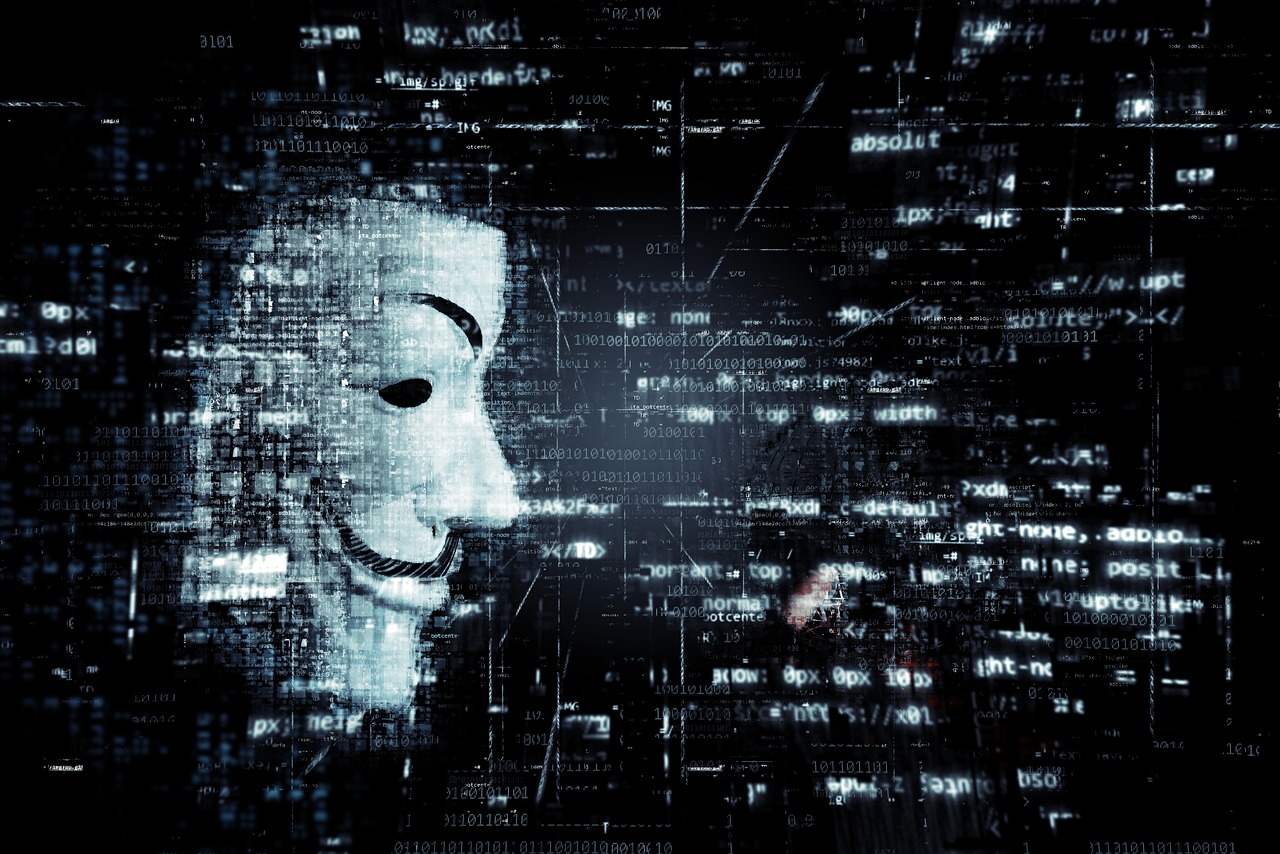
Interoperability
Interoperability is a critical aspect of Blockstack that sets it apart from traditional internet architectures. Imagine a world where your data isn't trapped in silos, unable to communicate with other systems. Blockstack's design encourages a seamless flow of information across various decentralized applications (dApps), allowing users to interact smoothly without the barriers typically imposed by centralized platforms. This means that whether you're using a social media app, a financial service, or a cloud storage solution, your identity and data remain consistent and accessible across all platforms.
One of the standout features of Blockstack's interoperability is its ability to allow users to maintain ownership of their data while still enjoying the benefits of diverse applications. Users can authenticate themselves across multiple dApps without having to create new accounts or share sensitive information repeatedly. This is akin to having a universal key that unlocks multiple doors, all while ensuring that you are the only one with access to that key.
Furthermore, Blockstack facilitates a collaborative ecosystem where developers can build applications that communicate with one another. This collaboration is crucial for enhancing user experience and fostering innovation. For instance, a developer creating a new messaging app can easily integrate features from a decentralized file storage service, allowing users to share files without leaving the chat interface. This interconnectedness not only enriches the functionality of individual applications but also creates a more cohesive digital experience for users.
To illustrate the concept of interoperability in Blockstack, consider the following table that highlights the key benefits:
| Benefit | Description |
|---|---|
| Seamless User Experience | Users can switch between different dApps without the hassle of logging in multiple times. |
| Data Ownership | Users retain control over their personal data, deciding what to share and with whom. |
| Enhanced Collaboration | Developers can create integrated solutions that leverage the strengths of multiple applications. |
In summary, interoperability within Blockstack is not just a technical feature; it represents a fundamental shift in how we think about digital interactions. By breaking down barriers and enabling applications to work together, Blockstack is paving the way for a more interconnected and user-centric internet. This shift empowers users, enhances privacy, and creates a vibrant ecosystem where innovation can flourish. Ultimately, the future of the internet lies in its ability to allow users to move freely and securely across a landscape of interconnected dApps, and Blockstack is leading the charge.
- What is Blockstack?
Blockstack is a decentralized computing network that gives users control over their data and privacy while enabling the development of decentralized applications. - How does Blockstack ensure user privacy?
Blockstack employs a decentralized identity system that allows users to manage their identities without relying on centralized authorities. - What are dApps?
Decentralized applications (dApps) are applications that run on a blockchain or decentralized network, providing users with greater control and security. - Can developers build on Blockstack?
Yes, Blockstack has a vibrant developer community that actively creates innovative applications and tools within its ecosystem. - What is the future of Blockstack?
The future of Blockstack looks promising as it continues to evolve with emerging trends in decentralization, privacy, and user empowerment.

Decentralized Applications (dApps)
Decentralized Applications, or dApps, are revolutionizing the way we interact with technology on the internet. Unlike traditional applications that operate on centralized servers, dApps leverage the power of blockchain technology to provide a more secure, transparent, and user-centric experience. Imagine a world where you control your data, and your interactions are safeguarded from prying eyes – that's the promise of dApps built on platforms like Blockstack.
At their core, dApps are designed to be open-source, meaning that their code is available for anyone to inspect, modify, and enhance. This transparency fosters trust among users, as they can verify the functionality of the application themselves. Furthermore, dApps are not owned by a single entity; instead, they run on a decentralized network, which means that no one party has complete control over the application. This is akin to a community garden where everyone contributes and shares in the harvest, rather than a single person owning the entire plot.
One of the standout features of dApps is their ability to facilitate peer-to-peer interactions without intermediaries. For instance, imagine a marketplace where buyers and sellers can transact directly, without the need for a middleman like a bank or payment processor. This not only reduces costs but also enhances privacy, as users are not required to share sensitive information with third parties. Instead, transactions are secured through cryptographic methods, ensuring that your data remains yours.
Moreover, dApps can be categorized into various types based on their functionality. Here are a few common categories:
- Financial dApps: These include decentralized finance (DeFi) platforms that allow users to lend, borrow, and trade cryptocurrencies without traditional banking systems.
- Social dApps: Platforms that enable social networking and content sharing, allowing users to connect and collaborate without central control.
- Gaming dApps: These applications offer a new way to play games, where players can truly own their in-game assets and trade them freely.
As the dApp ecosystem continues to grow, the potential for innovation is immense. Developers are constantly exploring new ways to enhance user experiences and create solutions that address real-world problems. For example, consider a dApp that provides secure voting mechanisms for elections. By utilizing blockchain technology, such an application could ensure transparency, reduce fraud, and empower citizens to participate in the democratic process with confidence.
However, it's important to acknowledge that the journey of dApps is not without challenges. Issues such as scalability, user experience, and regulatory hurdles need to be addressed for widespread adoption. Developers are actively working on these challenges, and as technology evolves, we can expect dApps to become more robust and user-friendly.
In conclusion, the rise of decentralized applications signifies a shift towards a more user-centric internet. With dApps, users are not just passive consumers; they become active participants in their digital experiences. As we move forward, the potential for dApps to transform industries and empower individuals is truly exciting. Are you ready to embrace the future of the internet?
What are dApps?
dApps, or decentralized applications, are applications that run on a blockchain network rather than being hosted on centralized servers. This structure allows for greater transparency, security, and user control.
How do dApps ensure user privacy?
dApps leverage cryptographic techniques to secure user data and facilitate transactions without the need for personal information to be shared with third parties.
Can anyone develop a dApp?
Yes! One of the core principles of dApps is that they are open-source, meaning anyone with programming knowledge can contribute to their development.
What are the benefits of using dApps?
Some benefits include increased privacy, reduced reliance on intermediaries, lower costs, and the ability to retain ownership of your data.

Blockstack's Ecosystem
The Blockstack ecosystem is a vibrant and dynamic network that brings together various stakeholders, including developers, users, and partners, all working harmoniously to create a decentralized internet. Imagine a bustling marketplace where every vendor has their own unique offerings, but they all share the same goal: to provide a better experience for their customers. This is precisely what the Blockstack ecosystem embodies, fostering collaboration and innovation at every turn.
At the heart of this ecosystem lies the developer community, a passionate group of individuals who are committed to building innovative applications and tools that leverage the power of decentralization. These developers are not just coding in isolation; they are part of a larger conversation that encourages knowledge sharing and collaboration. They actively participate in forums, attend hackathons, and contribute to open-source projects, ensuring that Blockstack remains at the forefront of technological advancements. This community is the lifeblood of Blockstack, constantly pushing the envelope to create solutions that prioritize user sovereignty and privacy.
Furthermore, Blockstack has forged strategic partnerships with various organizations and companies to enhance its offerings. These alliances are crucial for expanding Blockstack's reach within the decentralized internet landscape. For instance, collaborations with cloud storage providers enable users to store their data securely, while partnerships with identity verification services ensure that users can manage their identities without compromising their privacy. This interconnectedness not only strengthens the Blockstack platform but also promotes a more cohesive user experience across different applications.
| Component | Description |
|---|---|
| Developers | Innovators building decentralized applications (dApps) on the Blockstack platform. |
| Users | Individuals who utilize dApps and retain control over their personal data. |
| Partners | Organizations collaborating with Blockstack to enhance functionality and reach. |
As users navigate this ecosystem, they find themselves in a unique position of power. Unlike traditional internet models where data is often controlled by large corporations, Blockstack allows users to take the reins. They can choose which applications to use, how their data is stored, and who can access it. This user-centric approach transforms the way individuals interact with technology, emphasizing the importance of data ownership and privacy.
In conclusion, the Blockstack ecosystem is not just a collection of technologies; it is a community of like-minded individuals and organizations working towards a common goal. By fostering collaboration among developers, empowering users, and forming strategic partnerships, Blockstack is paving the way for a decentralized internet that prioritizes privacy, security, and user control. As we look to the future, it's exciting to think about the endless possibilities this ecosystem holds for transforming our digital interactions.
- What is Blockstack? Blockstack is a decentralized computing network that empowers users with privacy and control over their data.
- How does Blockstack ensure user privacy? Blockstack uses a decentralized identity framework that allows users to manage their identities without relying on centralized authorities.
- What are dApps? Decentralized applications (dApps) are applications built on the Blockstack platform that prioritize user control and data ownership.
- Who can participate in the Blockstack ecosystem? Anyone can participate, including developers, users, and organizations interested in building or using decentralized applications.

Developer Community
The surrounding Blockstack is a vibrant and essential part of its ecosystem. Imagine a bustling marketplace where ideas are exchanged, creativity flourishes, and innovation is the currency. This community is made up of talented individuals who are passionate about creating decentralized applications (dApps) that prioritize user privacy and control. These developers are not just building apps; they are laying the groundwork for a new era of the internet where users can reclaim their data and privacy.
One of the standout features of the Blockstack developer community is its commitment to collaboration. Developers from all walks of life come together to share knowledge, tools, and resources. This collaborative spirit is crucial because it fosters an environment where innovation can thrive. You might be wondering, how do these developers collaborate? Well, they participate in various forums, hackathons, and online platforms where they can exchange ideas, troubleshoot issues, and even co-create projects. This sense of community not only enhances the quality of the applications being developed but also creates a supportive network that encourages newcomers to join the fold.
Moreover, Blockstack provides extensive documentation and resources for developers, making it easier for them to get started and contribute. The availability of tutorials, SDKs (Software Development Kits), and APIs (Application Programming Interfaces) empowers developers to build applications that are not only functional but also user-friendly. This accessibility is vital because it lowers the barrier to entry for aspiring developers who may feel intimidated by the complexities of blockchain technology.
To illustrate the impact of the developer community on Blockstack, consider the following table that highlights some of the key initiatives and contributions:
| Initiative | Description | Impact |
|---|---|---|
| Hackathons | Events where developers collaborate to create innovative dApps in a limited timeframe. | Encourages rapid prototyping and fosters teamwork. |
| Open Source Projects | Community-driven projects that allow developers to contribute code and ideas. | Enhances transparency and collective ownership of the platform. |
| Documentation & Tutorials | Comprehensive guides and resources for developers to learn and build on Blockstack. | Facilitates learning and reduces the learning curve for new developers. |
In addition to these initiatives, the community also actively engages in discussions about the future of decentralized technology. They explore emerging trends, share insights, and even participate in governance decisions that shape the direction of Blockstack. This level of involvement not only empowers developers but also ensures that the platform evolves in a way that aligns with the needs and expectations of its users.
Ultimately, the Blockstack developer community is more than just a group of individuals; it is a movement towards a more decentralized and user-centric internet. By working together, these developers are not only creating innovative solutions but also building a future where users have the power to control their digital identities and data. If you’re a developer looking to make a difference, joining the Blockstack community might just be your gateway to contributing to this revolutionary change.

Partnerships and Collaborations
In the ever-evolving landscape of decentralized technologies, play a crucial role in the growth and adoption of Blockstack. By aligning with various organizations, Blockstack is not just expanding its reach but also enhancing its capabilities. These alliances create a vibrant ecosystem that fosters innovation and accelerates the development of decentralized applications (dApps).
One of the standout aspects of Blockstack's approach is its commitment to collaboration over competition. This philosophy encourages developers, businesses, and even other blockchain projects to join forces, leveraging each other's strengths. For instance, Blockstack has partnered with educational institutions to promote learning and understanding of decentralized technologies. Such initiatives not only increase awareness but also cultivate a new generation of developers who are well-versed in creating dApps that prioritize user privacy and control.
Moreover, Blockstack has formed strategic alliances with various tech companies and blockchain projects. These partnerships often focus on enhancing the user experience and ensuring that the applications built on Blockstack can communicate seamlessly with other platforms. The idea is to create a network of interconnected services that empower users rather than lock them into a single ecosystem. For example, collaborations with cloud storage providers enable users to store their data securely while retaining full ownership, thus reinforcing the core principles of Blockstack.
To give you an idea of the kinds of partnerships Blockstack engages in, here’s a brief overview:
| Partner | Focus Area | Impact |
|---|---|---|
| Educational Institutions | Decentralized Education | Promotes awareness and training in decentralized technologies. |
| Cloud Storage Providers | Data Ownership | Enhances secure data storage solutions for users. |
| Blockchain Projects | Interoperability | Facilitates seamless integration of services across platforms. |
These collaborations are not just about technology; they also encompass community engagement. Blockstack actively involves its user base in discussions about potential partnerships, ensuring that the community's voice is heard. This approach not only builds trust but also ensures that the partnerships formed are aligned with the needs and expectations of the users.
As Blockstack continues to expand its network of partnerships, the potential for innovation grows exponentially. Each collaboration brings new ideas and resources to the table, fostering an environment where creativity thrives. In a world where data privacy and user control are becoming increasingly important, Blockstack's efforts to collaborate and innovate are setting the stage for a truly decentralized internet.
In conclusion, the partnerships and collaborations that Blockstack engages in are vital for its success. They not only enhance the platform's capabilities but also create a robust community that is dedicated to building a better, more secure internet for everyone. By working together, Blockstack and its partners are paving the way for a future where users are in control of their own digital destinies.
- What is Blockstack? Blockstack is a decentralized computing network that empowers users with privacy and control over their data.
- How does Blockstack ensure user privacy? Blockstack uses a decentralized identity system that allows users to manage their identities without centralized authorities.
- What are dApps? Decentralized applications (dApps) are applications built on a blockchain that run on a peer-to-peer network, providing users with greater control over their data.
- Who can develop on Blockstack? Anyone can develop on Blockstack, thanks to its vibrant developer community that actively contributes to the platform's growth.

Future of Blockstack
The future of Blockstack is not just a vision; it's a growing reality that promises to reshape our understanding of the internet. As we stand on the brink of a new digital era, the potential for Blockstack to revolutionize the way we interact online is immense. With increasing concerns about privacy and data security, Blockstack's decentralized approach offers a refreshing alternative to traditional models that often leave users vulnerable to data breaches and exploitation. Imagine a world where your personal data is yours alone, where you have the power to control who accesses your information and how it's used. That's the promise of Blockstack.
Emerging trends in decentralization are gaining traction, and Blockstack is positioned at the forefront of this movement. The rise of decentralized finance (DeFi), non-fungible tokens (NFTs), and blockchain-based applications are all indicators that users are increasingly seeking alternatives to centralized services. Blockstack's robust infrastructure supports these innovations, making it easier for developers to create applications that prioritize user sovereignty and data protection. As more developers flock to the platform, we can expect a surge in innovative dApps that enhance user experiences while adhering to the principles of decentralization.
Moreover, the community surrounding Blockstack is vibrant and engaged, which is crucial for the platform's future. The developer community is constantly pushing the boundaries of what's possible, creating tools and applications that not only meet current demands but also anticipate future needs. This collaborative spirit is essential in a rapidly evolving digital landscape. To illustrate this, consider the following table showcasing some anticipated developments within the Blockstack ecosystem:
| Development | Description | Expected Impact |
|---|---|---|
| Enhanced User Interfaces | Improving the accessibility and usability of dApps. | Increased user adoption and satisfaction. |
| Cross-Platform Integration | Facilitating seamless interactions between different dApps. | More cohesive user experiences and data ownership. |
| Advanced Security Features | Implementing cutting-edge encryption and verification methods. | Greater trust and safety for users. |
As we look ahead, the potential for Blockstack to influence the broader internet landscape is undeniable. With ongoing developments in privacy regulations and a growing public awareness of data rights, Blockstack is poised to become a key player in advocating for user empowerment. The shift towards a more user-centric internet is not just a trend; it's a necessary evolution. By prioritizing transparency, security, and user control, Blockstack is setting a precedent for how digital interactions should be conducted in the future.
In conclusion, the future of Blockstack is bright, filled with possibilities that extend beyond mere technological advancements. It's about creating a digital environment where users are in control, where their privacy is respected, and where innovation can thrive without compromising security. As we continue to explore the potential of decentralized networks, Blockstack stands as a beacon for what the internet can and should be: a space that empowers individuals, fosters creativity, and prioritizes the collective good.
- What is Blockstack? Blockstack is a decentralized computing network that gives users control over their data and privacy.
- How does Blockstack ensure user privacy? Blockstack uses a decentralized identity framework that allows users to manage their identities without relying on centralized authorities.
- What are dApps? Decentralized applications (dApps) are applications built on blockchain technology that operate without a central authority.
- Why is decentralization important? Decentralization reduces the risks associated with data breaches and gives users more control over their personal information.
- How can developers contribute to Blockstack? Developers can join the Blockstack community to create innovative applications and tools that enhance the platform.
Frequently Asked Questions
- What is Blockstack?
Blockstack is a decentralized computing network that empowers users by giving them control over their data and privacy. It aims to create a more secure and user-centric internet by enabling decentralized applications (dApps) that prioritize user sovereignty.
- How does Blockstack differ from traditional internet models?
Unlike traditional internet models that rely on centralized servers, Blockstack operates on a decentralized framework. This means users can manage their identities and data without depending on central authorities, enhancing both privacy and security.
- What are decentralized applications (dApps)?
dApps are applications built on decentralized networks like Blockstack. They provide users with more control over their data and interactions, as they operate without a central governing entity, ensuring greater transparency and security.
- How does Blockstack ensure user privacy?
Blockstack enhances user privacy through its decentralized identity system, which allows individuals to manage their personal information and privacy settings. This reduces the risk of data breaches and unauthorized access to sensitive information.
- Can I use Blockstack for my own applications?
Absolutely! Blockstack encourages developers to create their own dApps on its platform. The vibrant developer community actively contributes to the ecosystem, making it easier for anyone to build innovative applications that prioritize user privacy and control.
- What is the role of partnerships in Blockstack's ecosystem?
Partnerships play a crucial role in Blockstack's growth by enhancing its offerings and expanding its reach. Collaborations with other organizations and developers help to create a more robust decentralized internet landscape.
- What does the future hold for Blockstack?
The future of Blockstack looks promising, with ongoing developments in decentralization, privacy, and user empowerment. As more users and developers adopt decentralized solutions, Blockstack is poised to make a significant impact on how we interact online.









